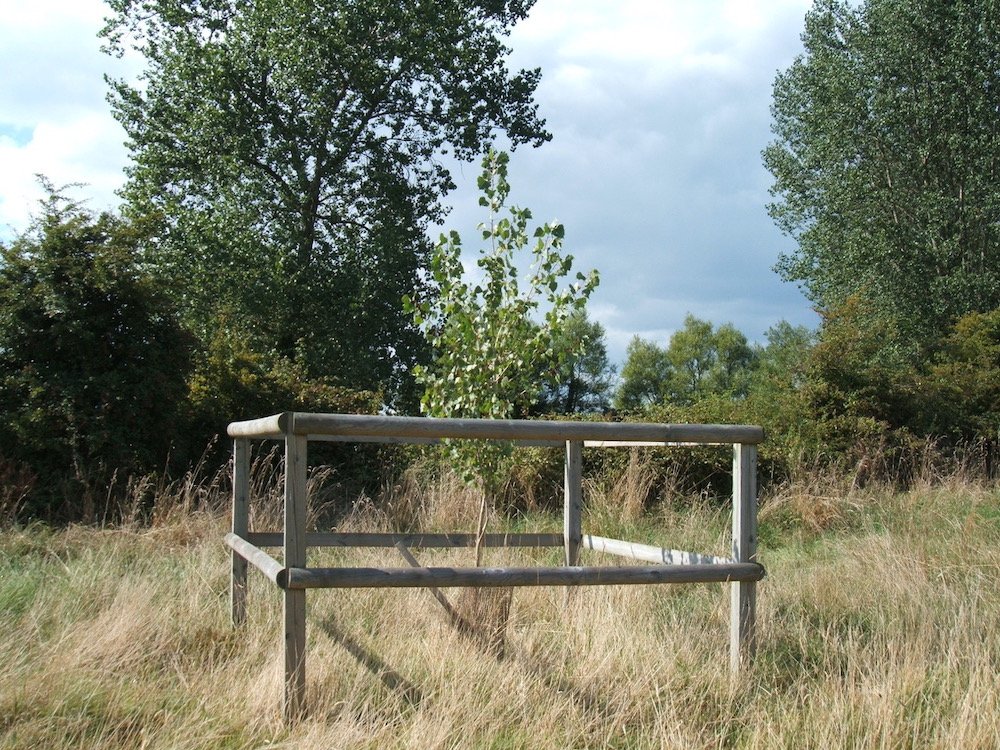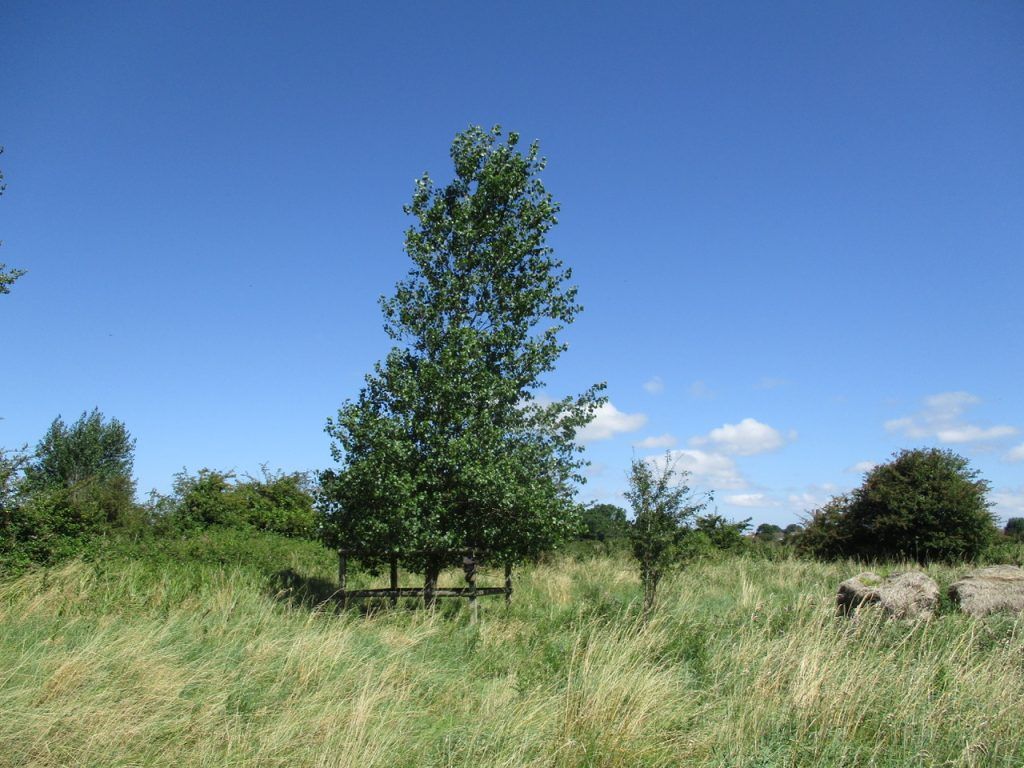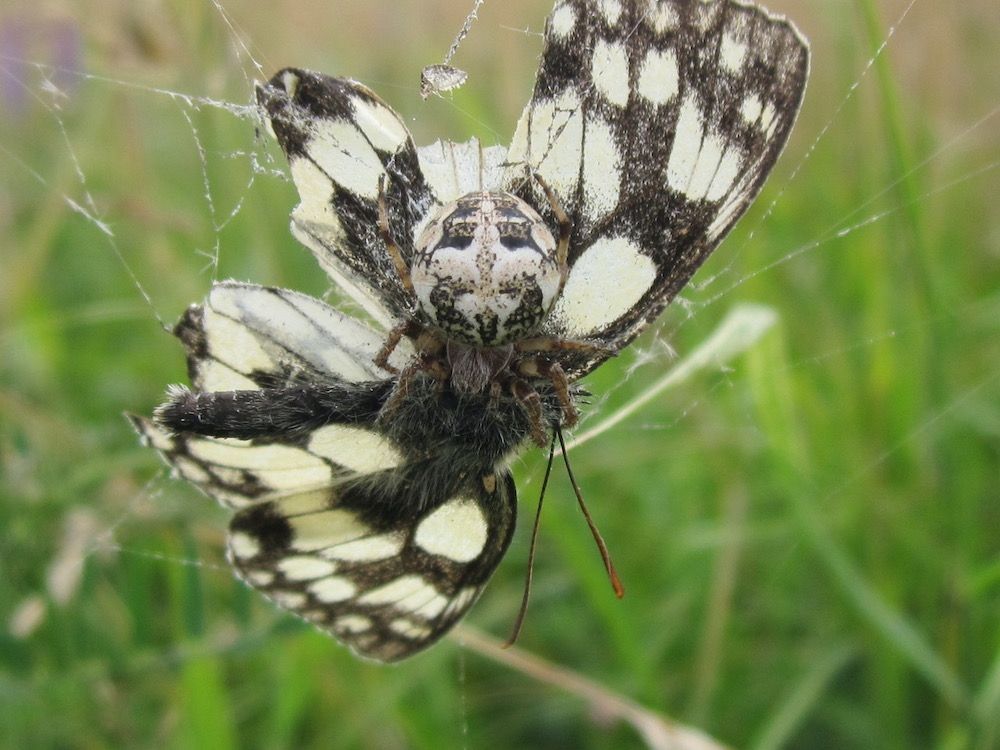A ‘Populist’ View
- 11 December 2023
-
 Faith Moulin
Faith Moulin
- Congresbury Moor, Littlewood, Reserves, Trees
When my friend Sue told me about a project to identify rare native black poplars in the 1990s, it was right up my street. I still haven’t really quite got round to a serious survey, but I can share with you a little associated story.
Near the cross-roads with Ham Lane, where it meets the moor road to Clevedon, Claverham Drove once had a row of old poplar trees. These were planted by John Hugh Smyth-Pigott of Brockley Hall, a gentleman whose lands stretched from Bristol to Weston-super-Mare and who was eulogised as ‘the greatest tree-planter in the kingdom.’ He was said to have planted one million trees. YACWAG’s Littlewood was in his ownership as a plantation in 1820. The 1903 Ordnance Survey map shows the landscape around Littlewood enriched and embellished by tree circles in the middle of the regular, rectangular, ditch-edged fields in the drained, straight-lined, Enclosure landscape. Some of these tree circles could still be seen 20 years ago.
The sky-scraping black poplars fringing Claverham Drove were part of Smyth-Piggot’s 200 year old planting scheme – but were they natives? I made several inconclusive visits to the trees over the years, studying their leaves at different times of year, examining the bosses on the deeply grooved bark. Eventually I sent samples to John White at the Forestry Commission and, while I was waiting for the verdict, I picked two twigs I could reach from the ground and took them home where I kept them on the kitchen window-sill in a jar of water. Both soon grew fleshy white roots and I potted them on into flower-pots and put them down the garden, where I forgot them for a year or so. The letter came and John White was able to tell me the leaves did indeed come from a black poplar, but not a native Populus nigra. The trees were a subspecies: Populus nigra subspecies nigra.
YACWAG then bought its second field – New Croft: a 17th century early enclosure from the open common – an old hay meadow. It was eager to be liberated from the demands of modern agriculture. The northern quarter of New Croft has a lot of horsetail (equisetum spp) and we wanted to increase biodiversity. Nearby, on the other side of our boundary ditch, was a group of hybrid black poplars with large leaves and a healthy crop of mistletoe. Perhaps New Croft would be a good home for the Smyth-Piggot poplars from Claverham Drove? They could form a community there.

Poplar is an excellent tree for this wet area and many have been planted as shelter belts. It is a popular (excuse the pun) host of mistletoe, another plant that captures my imagination. It captured the imagination in ancient times too. Pliny, writing 2000 years ago, wrote that the Druids of Britain would cut down mistletoe with a golden sickle, catching it in a priest’s white robe, for use in their religion. Mistletoe is a semi-parasite, sinking roots into a tree to siphon off nutrients and water. In Yatton and Congresbury hosts of mistletoe include rowan, hazel, hawthorn, ash, field maple and willow as well as the more usually seen poplar, lime and apple. I am still looking out for it on oak.

YACWAG’s Saturday work-party volunteers, the Action Team, constructed tree guards to protect the small trees from livestock and wild animals, and planted the little cuttings in 2001.

The photos show their phenomenal growth. In 2023, the tree guards are still in good shape and the poplars are 10 metres tall, adorned with mistletoe and providing habitat for fungi, invertebrates and birds. One of the lodgers we caught in the act was a walnut orb spider preying on a marbled white butterfly. These grassland butterflies have returned to breed in the field to take advantage of the variety of grass species, nectar-rich knapweed and other wild flowers that have come up since YACWAG bought the field. The spider’s camouflage is a wonder of nature!

New Croft has been the subject of a blog about its secrets and how we discovered them (click here), but these poplars are part of its story too, although they are hiding in plain sight. Their leaves shiver and shimmer in the faintest breeze and whistle back to the visiting birds. Their stems flex in the slightest wind as they beautify the stark flatlands with their heroic height.

© Copyright YACWAG, or original authors. All rights reserved. | Registered charity 1076362 | Privacy policy | Cookie policy | Terms & Conditions |Web design: StanfordGraphics


